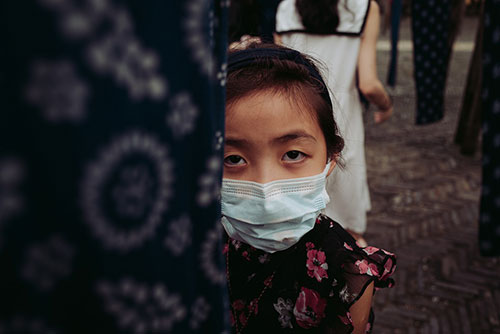Our children and the impending third wave
Ever since the WHO declared Covid-19 a global pandemic in March 2020, the world has changed. We continue to grapple with what has possibly been the deadliest pandemic in history: a pandemic that took its toll on lives, health, economy, education, agriculture, food supply, and every part of our societal network. We have borne the brunt of a deadly second wave. With high infectivity, rapid community clustering of cases, re-infections, and severe lung involvement, the outbreak was explosive. Entire families were affected, including children. Parental apprehensions and anxieties have been running high ever since.

“Are children going to be predominantly affected when the third wave hits us?”
“Will children develop severe Covid infection?”
“How can we, as parents, be prepared to manage our children in the third wave?”
“Will vaccines be available for children in the near future?”
As paediatricians, it is our responsibility to allay unnecessary anxieties since children are at the heart of all fears relating to the third wave.
We need to understand the following facts, which several professional bodies, including the Indian academy of paediatrics, experts, and scientists from top healthcare institutions in the country have been constantly asserting.
- The second hit of Covid was a tsunami in comparison to the first wave. The magnitude, the spike, and surge in adult cases were a lot higher than the first. The greater the number of adult cases, greater was the number of children exposed to such infected individuals. Such a massive increase in the overall number of infected adults reflected in the paediatric numbers.
- Data from a scientific survey, a sero survey to be precise, showed that the percentage of infected children (10 to 17 years of age) was 25%, about the same as that of adults. This indicates that it’s unlikely for the third wave to affect children exclusively. Children will be just as susceptible as the adults. We do not have sound scientific evidence to suggest that children will be at greater risk.
- In both the waves, 90% of infections in children were mild/asymptomatic. The incidence of the “multisystem inflammatory syndrome” or MIS-C, the most severe manifestation of illness, was 1 to 2 per 1,00,000 population. This goes to show that though children were getting infected alongside adults, they did not develop severe disease.
From the above pointers, it is clear that we go by scientific data and statistics rather than speculations that run rife.
The Way Forward
There is no denying that until the pandemic burns out or we develop herd immunity, such waves shall occur. So far, fortunately, children have been relatively less affected. However, we shouldn’t get too complacent. Preparedness is the key. This is no time to lower our guard. Management protocols for children are already in place, and paediatricians have been trained in the same.
We need to focus on educating parents about 1. how to manage a child with mild illness (supervised home care), 2. warning signs, and 3. being a positive role model with regard to Covid-appropriate behaviour (mask etiquette, hand hygiene, social distancing).
We also need to understand how important it is for adults in the community to get vaccinated. Children will get indirectly protected if the elders around them are immunized. Don’t our kids get their jabs and injections right from the moment they are born? It’s now our turn to take the shot of hope! We owe it to our loved ones! Also vaccine trials in children (2 to 18 years) are underway in our country, and the preliminary data show encouraging results, according to experts. Once proven safe and effective, children also will receive the vaccine.
So the question remains… “Are we going to be needless alarmists?” or “Are we going to stand together for our children?”
Stay Safe!

Dr. Lakshmi Prashant
Consultant Pediatrician
Kauvery Hospital, Chennai

